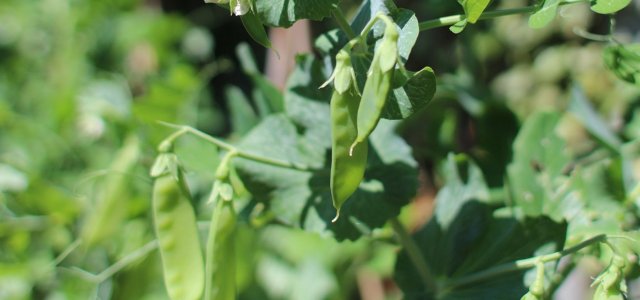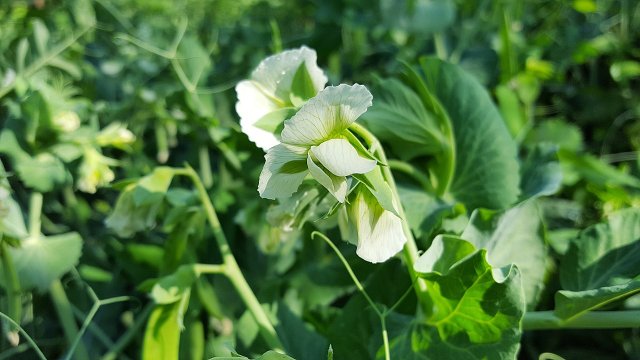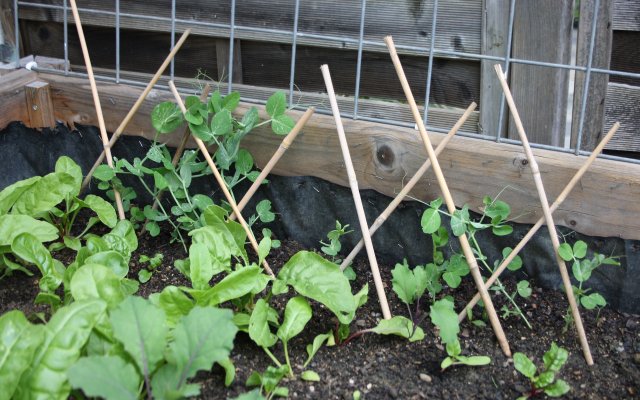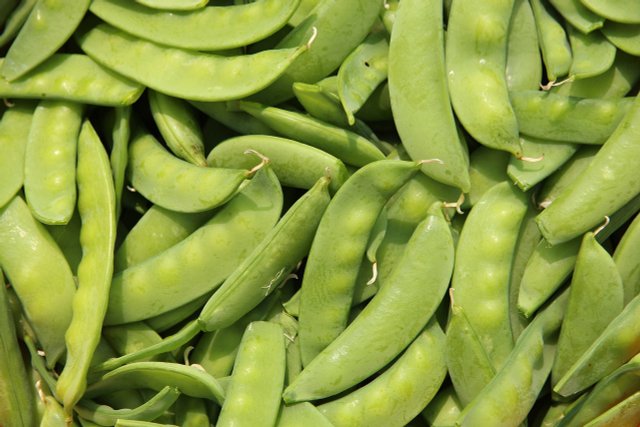
If you want to plant sugar snap peas, you need to follow only a few tips: The legumes are uncomplicated to cultivate. In this article, we will show you how to plant and care for sugar snap peas.
The sugar snap pea belongs to the legume family. It is also known by the names snap pea, pigeon pea or mange-tout. The French name Mange-tout means “eat everything” and is due to the fact that the pod of the sugar snap pea is also edible. The fruits of the sweet pea do not have a parchment layer in the pod, making them particularly tender.
Sweet pea is a frugal plant that bears abundant fruit. Therefore, it is not difficult to plant the popular sugar snap peas. They grow in the vegetable garden, but you can also grow them in pots or even in the balcony box.
Contents
Planting sugar snap peas: This is what you should know

Sugar snap peas are annual herbaceous plants. Several side shoots with pinnate round leaves grow from one main shoot. Sugar snap peas form tendrils with which they cling to each other or to a climbing aid.
Depending on the variety, sugar snap peas grow between 50 and 150 centimeters high. From May, white flowers appear, from which the five to seven centimeter long pods grow. Each pod contains four to ten seeds. Like all legumes, sweet peas form a symbiotic relationship with nodule bacteria. Nodule bacteria fix nitrogen from the air and supply sugar snap pea plants with the valuable nutrient.
Sugar snap peas are well suited as a pre-crop. In most cases, you can harvest the first sugar snap peas as early as three months after sowing. The more often you harvest the tender pods, the more fruit the plants will bear.
Sugar snap peas are slow growers and provide nitrogen to the soil through nodule bacteria. You can grow them very well in mixed culture with other vegetables that need a lot of nutrients. Sugar snap peas grow well together with
- Carrots,
- cabbage,
- fennel,
- lettuce and
- radishes.
However, you should avoid other legumes and nightshade plants. You should also take a break of at least four years after growing sugar snap peas and grow other vegetables in the bed during this time.
Planting sugar snap peas: location and soil

Sugar snap peas prefer an airy and sunny place. The soil should be rich in humus, loose and evenly moist. It is often difficult to plant sugar snap peas in heavy soils that are prone to waterlogging. Seeds often rot in the wet soil instead of germinating.
You can plant sugar snap peas not only in a vegetable garden, but also in a raised bed. It is important that you also provide a climbing aid in the raised bed. This can be, for example, a hunter’s fence made of bamboo sticks (photo).
If you do not have your own vegetable garden, but a terrace, you can still plant sugar snap peas. A large planter is very suitable for this purpose. With leftover wire fencing, you can build a simple climbing support for the sugar snap peas. The sugar snap peas can hold on very well to this climbing aid with their tendrils and grow stably upwards.
But even if you only have a small balcony garden, you don’t have to give up planting sugar snap peas. Since they have a very low nutrient requirement, they even thrive in the balcony box. However, the yield is significantly lower than in the garden.
How to sow sugar snap peas
The right time to sow sugar snap peas is the end of April. Ideally, the soil temperature should be between five and eight degrees Celsius. Tip: To ensure that the sugar snap pea seeds germinate as quickly as possible, place them in room-warm water for 24 hours before sowing and allow them to swell.
Sugar snap peas grow in rows. The individual rows should be spaced 30 to 40 centimeters apart.
Within the row, you should space the seeds about five centimeters apart.
The cotyledons of the pea unfold below the surface of the soil, so the seeds should be placed about five to eight centimeters deep in the soil.
Water the fresh seed thoroughly.
Until the sugar snap pea seeds germinate, always keep the soil well moist. However, do not allow waterlogging to form or the seeds will begin to rot.
Sugar snap peas are susceptible to powdery mildew. The best weapon against it is a light breeze. Therefore, it is important to maintain row spacing. Do not, under any circumstances, grow sugar snap peas in a spot sheltered from the wind.
Planting sugar snap peas: care and harvesting

Sugar snap peas care
Keep the soil loose and weed-free once the seeds have emerged. When the plantlets are around 15 inches tall, you should lightly mound them. Do this by adding a little extra soil around the stems and mounding them into a small mountain. This will cause the sugar snap pea plants to form more lateral roots than usual, allowing them to absorb more water and nutrients. You’ll only need to water sugar snap peas during dry spells.
Trellis
Most sugar snap pea varieties reach a height between 50 and 100 centimeters and therefore need a stable trellis. Wire fencing, bamboo canes, hazel rods or a structural steel mat are suitable for this purpose. The trellis should be oriented in a north-south direction so that the peas get enough light on both sides.
Fertilize sugar snap peas
Sugar snap peas are low growers and usually do not need fertilizer in the vegetable garden. This is due in part to the nodule bacteria that process atmospheric nitrogen for the sugar snap pea plants.
It’s a different story if you grow sugar snap peas in a container or balcony box. Since only a small amount of soil is available, the supply of nutrients is limited. Sprinkle a few handfuls of compost into the pot once a month. The nutrients penetrate the soil through the water.
Harvest
It takes only about three months from sowing to maturity. Harvest sugar snap peas when the pods are tender, fresh green and translucent and the peas are still small. This is usually the case as early as June.
If you harvest the sugar snap peas regularly, you will stimulate new flower formation. As a result, new sugar snap peas will appear regularly and you will have a rich harvest.
Sugar snap peas have a slightly sweet taste because they produce more sugar and less starch than other types of peas. That’s where the name sugar snap pea comes from. Cook the sugar snap peas quickly after harvesting, as the sugar will gradually turn to starch if stored for a long time

